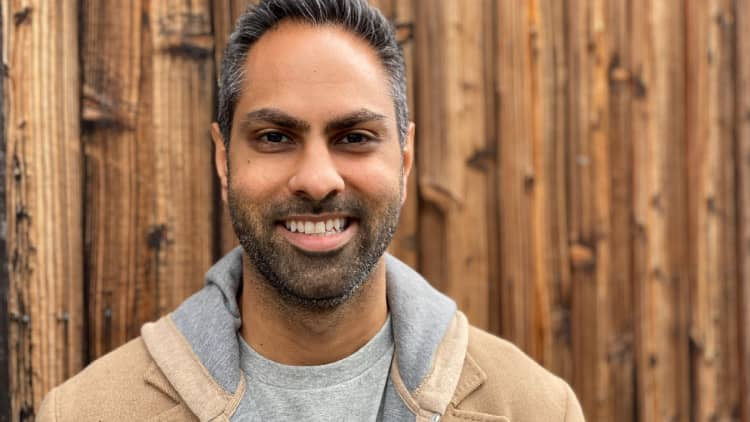Federal student loan borrowers had payments due on their loans this October for the first time in over three years.
While many borrowers have experienced problems with repayment, like inaccurate billing statements or trouble contacting their loan servicers, most borrowers should be settling back into repayment by the end of the month.
Although some borrowers may remain optimistic their loans will one day be forgiven, financial experts say you should still be making your payments while you're hoping and waiting.
"We've seen many instances where there has been partial forgiveness or some forgiveness, but by and large, really no forgiveness [for most borrowers]," Douglas Boneparth, founder and president of Bone Fide Wealth told CNBC's Frank Holland on Tuesday during the CNBC Make It: Your Money virtual event.
"We have to take control over our student loans," Boneparth said.
It can be stressful to think about making those payments again, especially if you were struggling to cover them before the pandemic pause or if you have other expenses now. But avoiding your student debt will only land you in more trouble down the road.
Here's the first step to take if you're overwhelmed by paying back your student loans, and where to go from there.
1. Find your loan servicer
"The first thing you've got to do is get organized," Boneparth said. How can you repay your loans if you don't know who's managing them?
Federal student loans can be confusing because you take the loan out from the government, not a specific bank or private lender. But once the loan is disbursed, you're assigned one of several federal loan servicers. So instead of getting a statement from the Department of Education each month, you get one from Nelnet, Missouri Higher Education Loan Authority or one of the other servicers.
Additionally, your servicer may change over the life of your loans. Earlier this year, millions of federal borrowers had their servicers changed when the government signed new contracts.
If you're not sure who your loan servicer is at any point, you can log into the Federal Student Aid website to find out. Generally, you only have one servicer handling all of your loans, but there is a chance you could have multiple, according to FSA.
2. Get to know your loans
Once you know who's servicing your loans, you can start managing them.
Boneparth recommends putting everything into a spreadsheet so you can "get to know how many loans you have outstanding and all the information around them."
When you have multiple loans at a single servicer, you have the option to make payments individually or as a group. Your minimum monthly payment will be the total owed across all your loans. In general, your payment is applied first to any outstanding fees, then to the accrued interest, then to the principal balances.
If you pay more than your minimum payment in a month, the excess payment will generally go toward the loan with the highest interest rate first, unless you provide alternate instructions for your servicer.
3. Pick a repayment strategy
Depending on your broader financial goals, you may want to pay your student loans off as quickly as possible. Or you might prefer to take your time. There's no wrong answer as long as you stay on top of your minimum monthly payments.
If you're trying to get out of debt quickly though, you may explore debt payoff strategies like the debt avalanche or debt snowball methods.
With the debt avalanche, you focus on paying down the loans with the highest interest rate first. This is where that spreadsheet Boneparth mentioned comes in handy. You'd continue making your minimum monthly payments, but when you put extra money toward your debt, make sure your servicer applies it to the loan with the highest APR, if it's not doing so automatically.
With the debt snowball method, start small by putting any extra payments toward the loan with the smallest balance first. Once it's paid off, move to the next-largest loan. This strategy helps you build momentum to keep going.
Both are great strategies to help keep you motivated, but the debt avalanche will likely save you more money in over the long term because you focus on reducing the principal balance of the debt that's growing the fastest. The faster you pay it off, the less interest accrues and the less you pay back in total.
Once you have a strategy in mind, you can determine if there's a repayment plan best suited for you. The standard repayment plan will divide your loans and anticipated interest evenly over 10 years of the same monthly payment.
If your monthly payment is too high on the standard plan, you might consider an income-driven repayment plan like the new Saving on a Valuable Education plan. IDRs mean your monthly payment will change if your income changes, but they're designed to be as affordable as possible.
DON'T MISS: Want to be smarter and more successful with your money, work & life? Sign up for our new newsletter!
As technology reshapes business expectations, some leaders are embracing change and transforming their organizations for the future. Join the CNBC Evolve Global Summit on November 2 to hear strategies to adapt, innovate and succeed in this new era of business. Buy your ticket here.



